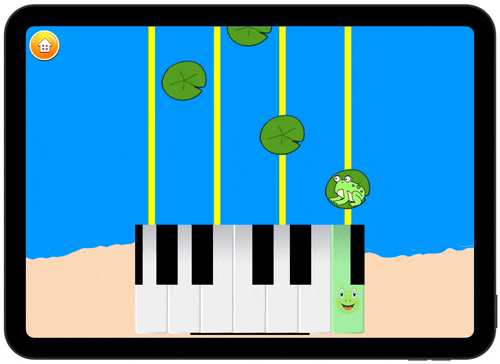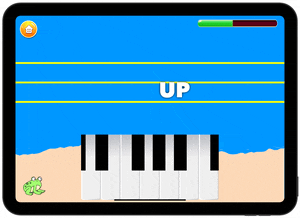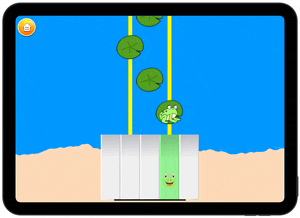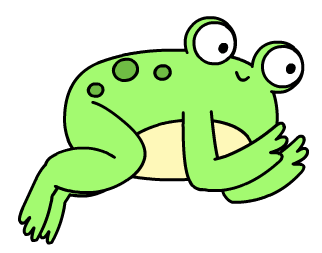A new way for children to learnnote-readingat the piano.
A new way for children to learnnote-readingat the piano.

Seven levels of lessons get students started on the road to music-reading mastery.
- Lessons start out with the most basic of concepts- lines & spaces, steps, skips, and repeating notes.
- Concepts progress to larger intervals, up to an octave.
- Students get a chance to test what they’ve learned with interactive activities.

Practice mode will let students work on their reading skills in a game-like environment, but without any pressure.
- New intervals are introduced one at a time with each new level.
- When mistakes are made, a visual demonstration shows the students how counting the lines and spaces between notes mimics counting keys on the piano keyboard.
- A quick warm-up with a vertical staff helps children to make the connection between staff and keyboard.

Now it’s time for the fun part. Students put their skills to the test in a game so addicting they won’t realize how much they’re learning. Help froggy navigate through a myriad of obstacles including:
- A shark who will give you a scare if you linger too long.
- Lilypads that are constantly sinking and resurfacing.
- Jellyfish that don’t like to be bothered.
- A loud, distracting opera diva.
- Nightime mode, where you better have a good memory (or a flashlight).
There's more to it than "A, B, C" or "Do, Re, Mi"
Especially at the piano, developing musicians need the ability to recognize intervals. Simply put, music written for the piano has too much going on to be thinking about the note name for every note. We need to be able to quickly process the relationships of direction and distance between notes. This allows us to see patterns in the music, play more fluidly, and also avoid constantly staring down at our hands to be checking that we are playing the correct letter note.
Now, this isn’t to say that being able to quickly identify note names isn’t important. Of course it is extremely important. You have to be able to identify the starting notes of a piece. Sometimes, notes might jump by very large intervals. In piano music, a clef could change at any time. Recognizing intervals when going from the end of one line of music to the beginning of the next can be a challenge. In all of these cases, being a quick note-name reader is a necessity. (And if identifying note names more quickly is something you need to work on, we have an app for that too!)
But the real key to fluent sight-reading is the almost subconscious act of seeing symbols on a page and translating them to keys on the piano. Most of the time, this is done by recognizing patterns and seeing how the notes relate to each other intervallically.
When up is not up, and down is not down.
 Another real challenge that piano students face when learning to read music is getting a grasp on the spatial relationship between notes on the staff and keys on the piano. As notes move higher up the music staff, their pitch is also higher, as we would expect. But this translates into moving towards the right on the piano keyboard. Notes moving down on the music staff move towards the left on the keyboard. Meanwhile, we read each line of music on the page from left to right. The interplay of these concepts is quickly grasped by some students, but remains a sticking point for others, even for those who may otherwise show a good deal of musical aptitude.
Another real challenge that piano students face when learning to read music is getting a grasp on the spatial relationship between notes on the staff and keys on the piano. As notes move higher up the music staff, their pitch is also higher, as we would expect. But this translates into moving towards the right on the piano keyboard. Notes moving down on the music staff move towards the left on the keyboard. Meanwhile, we read each line of music on the page from left to right. The interplay of these concepts is quickly grasped by some students, but remains a sticking point for others, even for those who may otherwise show a good deal of musical aptitude.
For anyone who has developed a level of piano proficiency, it can be easy to forget how abstract these concepts can be when a child is first confronted with them.
 “Hop To It!” allows students to first get acquainted with the music staff in a vertical orientation. In this way it is easier to visualize how the lines and spaces each correspond with adjacent keys on the piano. When the staff is rotated to its normal horizontal configuration, those relationships remain the same even if we look at them differently.
“Hop To It!” allows students to first get acquainted with the music staff in a vertical orientation. In this way it is easier to visualize how the lines and spaces each correspond with adjacent keys on the piano. When the staff is rotated to its normal horizontal configuration, those relationships remain the same even if we look at them differently.
Enjoyable
Children of all ages will be drawn to the colorful characters and amusing sound effects. Learning will seem more like play than work.
Engaging
Students can track their progress and accumulate stars for each level completed. Each new level provides just enough challenge to keep things interesting, without becoming frustrating.
Effective
Most importantly, children will experience a rapid improvement in their ability to read music. Instead of some kind of secret code, music notation will start to feel natural and intuitive.

